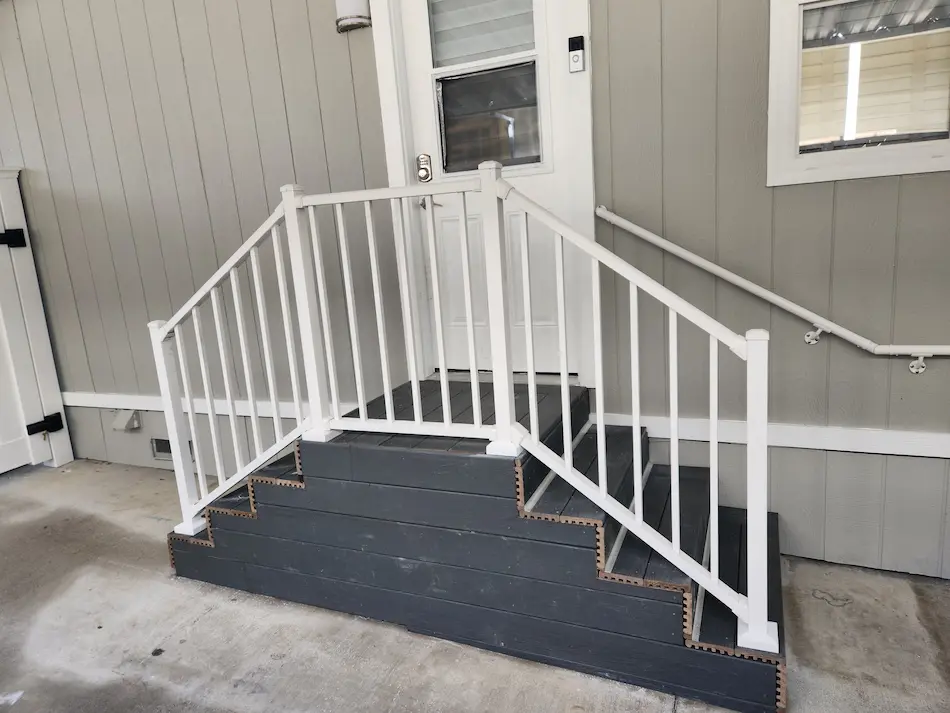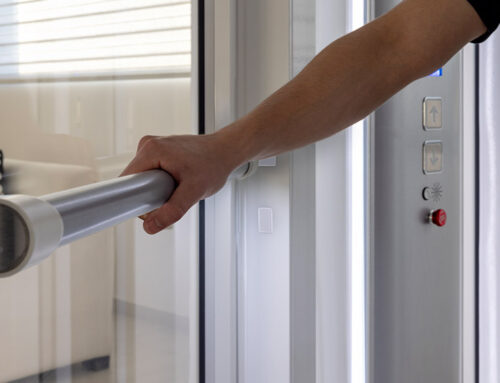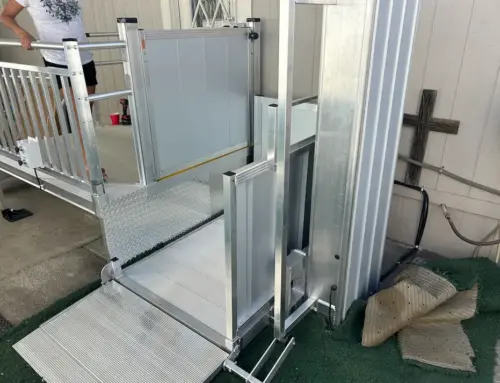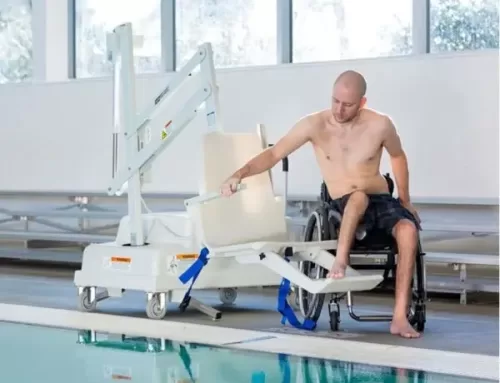Handrails are specially designed supportive tools for seniors or anyone having mobility troubles to make their movement easier and safer. Typically, Inside a house, handrails are used on stairs. But, for seniors, handrails can be used more frequently near their beds, inside toilets, and near their reading corners.
When chosen with caution and rightly placed, handrails can enhance safety for senior citizens. If the placement, material selection, or installation has not been executed properly, the entire purpose may fail to serve. In this article, we will discuss selecting the right handrails for seniors. We will talk about their importance and the safety standards to be maintained. By the end of the article, you will be able to choose the best handrails for your senior loved one comfortably.
What Is a Handrail?
A handrail is a trail to grab and take support from when walking, standing up, or sitting down. Handrails are frequently used on stairs. While not solely dedicated as a part of stairs only, they may be used in toilets, long pathways, inside a toilet, and outdoors.
Why Are Handrails So Important for Seniors?
Human hand grip force increases from the age of 20 and curves at the age of 40. In general, males are stronger than females in all age groups. With increasing age, the balance of the human body becomes wobbly. Uncertainty about achieving better grips when holding is a common problem in this age. These reasons give strong arguments for additional support or supportive features. It may be a caregiver, extended handrails, or wheelchairs.
However caregivers are only able to help outside a bathroom or toilet in most cases. Inside, there should be support to hold the person to sit and stand up. On stairs, one side of the person can be looked after, and the other side must have some supportive extension to hold firmly and keep the balance. In some situations, when there is no dedicated caregiver, an extended handrail becomes a dependable ally for safe and easy navigation by preventing falls and injuries.
What Are the Specific Needs of the Elderly?
After a certain age, extra measures are needed to ensure safety and mobility at home. Handrails are non-comparable options for this process, and they have the potential to offer proper support and extra stability. Here are three main factors to consider for handrail safety when evaluating the needs of the elderly for handrails,
-
Grip-ability
The handrail should be easy to hold. The surface of the handrail should be non-slippery and provide a better grip. The idea that “Handrails are meant to give proper balance” should reflect on its surface and overall structure.
-
Height and Accessibility
If the installed rails are too high or too low to hold, it fails to serve at its core. A personalised measurement should be adopted to ensure the elderly user doesn’t have to stress or curve their hands when using the rail. Here, one thing is important to consider: handrails in different places and for different purposes shall not be installed at the same height. Consider examples of sitting on a toilet seat and using a stair to understand the prospect more easily.
-
Strength and Reliability
Very few of us would be able to squeeze or band a handrail even if we wanted to. When we talk about the strength and reliability of a handrail, we normally talk about proper anchoring. Typically, handrails are installed using bolts on both ends. Make sure that the handrail is installed properly and that the user can rely on it even in the subconscious mind.
The specific needs of elderly users may vary from person to person. Discussing and evaluating regular movements can help you find a personalised solution.
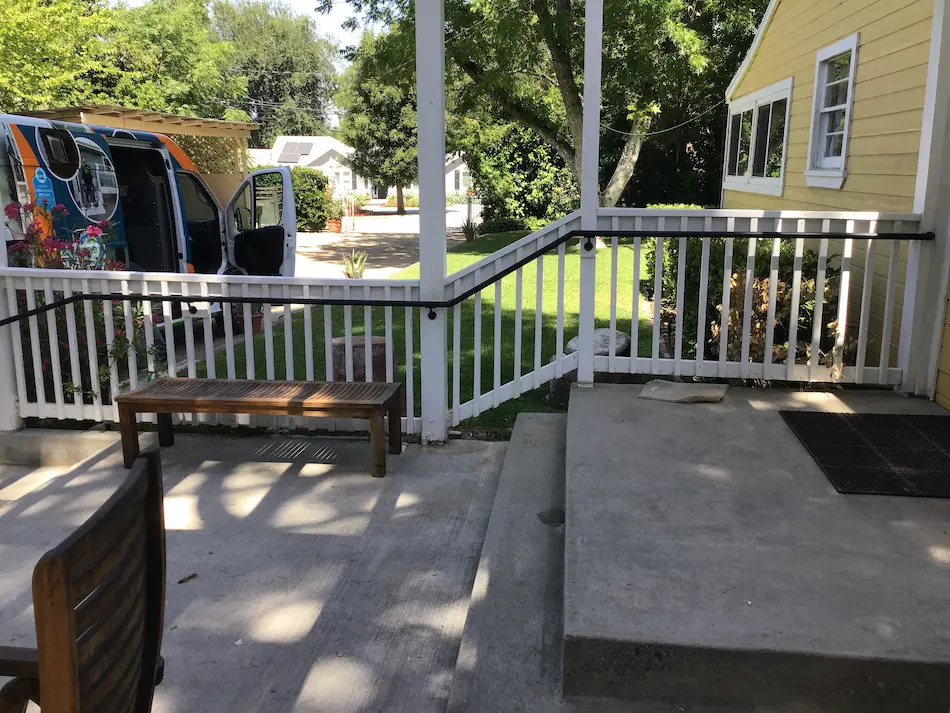
How to Choose the Right Handrail Material and Style
It is key for aesthetics, utility and longevity to select the appropriate materials and finishes for your railings. Our preferences must balance visual appeal with practical considerations such as climate, maintenance requirements, and durability.
Materials commonly used for railings include wood, metal, vinyl, and glass, each offering different benefits and challenges. Wood, for instance, provides a classic look but may require more maintenance to withstand weathering. Metal options like aluminium or steel are durable and can be designed with intricate patterns, yet they might need treatments to prevent rust in humid or rainy climates.
The finish of your railing plays a significant role as well. For wood, finishes are necessary not only for weather resistance but also for enhancing the natural grain. Metals might be powder-coated to add colour and additional protection against elements.
Choosing the suitable material and finish for your railings depends on matching your home’s style and considering how much time and resources you are willing to invest in maintenance. Making an informed decision here makes sure that your railings remain beautiful and functional for years.
Which Safety Standards Should Your Handrail Meet?
Safety standards are for the unseen future. One thing is obvious: a handrail’s purpose is to help out your family members. If safety is not ensured, the entire process becomes less effective and dangerous. With years of experience in installing handrails and other supportive tools, we have listed the ADA standards for your ease. Look at the list below for quick and straightforward comprehension.
-
Building Codes
Every time a handrail is installed, your home undergoes small renovations. With multiple numbers, it may look like a remodelling process. Before starting the installation process, it’s important to check local building codes to ensure the handrails are legally acceptable and safe to use. These codes generally suggest specifications like height, spacing, and how they should be anchored.
-
Height and Length Requirements
It’s important to follow state laws when installing handrails. According to the regulations, 36-inch-high handrails are standard for home use. In commercial buildings, handrails are usually 42 inches high, which helps with safety and meets the needs of senior users without having to stretch up or bend down.
Handrails should cover the entire flights of stairs or length walkways, with extensions at the top and bottom landing so the user can hold on to the rail the whole time they use it.
-
Strength and Stability
Handrails must be strong enough to support someone if they recline or fall against them. They must be solidly attached to the wall or floor without wobbling or giving.
-
Features for Additional Support
The edges of the grab bar should be safest to prevent the risk of injuries if the user brushes against them. The surface should be easily gripable, even for hands that might not be as strong as they were before. Round or rectangular-shaped surfaces are often recommended for comfortable handling.
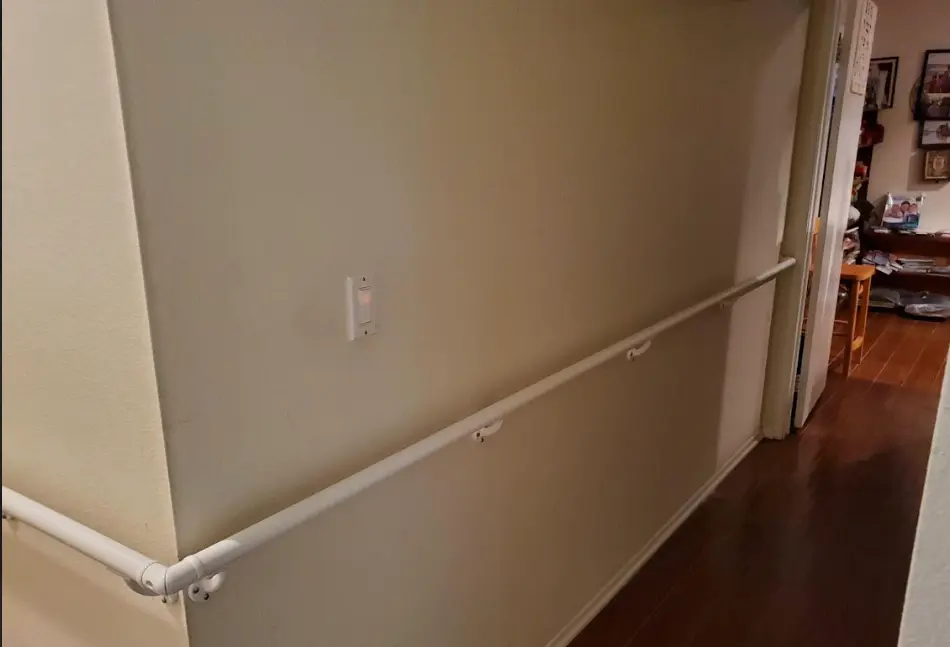
Call Before You Fall Handrails for Seniors
Are you looking for a handrail for your home? Handrails are a simple solution to improving mobility and safety in your home. At Call Before You Fall, we’re excited to bring you high-quality handrails that are easy to install and designed for enhanced user safety. Our handrails offer robust support when navigating stairs or walkways. Our handrails offer peace of mind and greater independence. Check out the places where you can install our handrails:
-
On Stairs
Installing a handrail on a stairway ensures stable support when seniors climb up or down using a stair. Call Before You Fall handrails are fully customisable with technical joints to remain continuous even as they climb the stairs and turn corners. Accidents may occur even on a tiny slip of steps, so a well-installed handrail for the elderly can add additional safety when entering or off going the home.
-
In Hallways or on Walkways
Walkways are more exposed to extreme outdoor weather conditions. Hallway or walkway handrails from Call Before You Fall are built using long lasting materials that will outlast extreme weather conditions. We can also provide a non-slippery surface in outdoor situations.
-
In the Bathroom
When an elderly person is walking or going from one room to another, we can see them, and they can see us. These make them feel accompanied and more confident. But the bathroom is a more private place with less or no access to us, which may make them feel a little bit scared and hesitant. On many occasions, these complexes have turned into severe accidents. To prevent these unwanted incidents, Call Before You Fall has a collection of handrails designed for assistance in bathrooms, with a variety of colours and rust-free materials to ensure that the handrail aligns with your bathroom decor.
Conclusion
Handrails enhance safety, stability, and freedom of movement for senior family members. They also increase a house’s accessibility and make it more welcoming for loved ones of all ages. As a supportive tool, handrails urge acute concentration on selecting materials and proper installation.
At Call Before You Fall, we understand the importance of maintaining mobility as we age or deal with the changes aging naturally brings. That’s why our handrails are easy to install and affordable while still retaining exceptional quality standards. Living independently shouldn’t be restricted by limited accessibility—let us help make your life easier and safer today!

